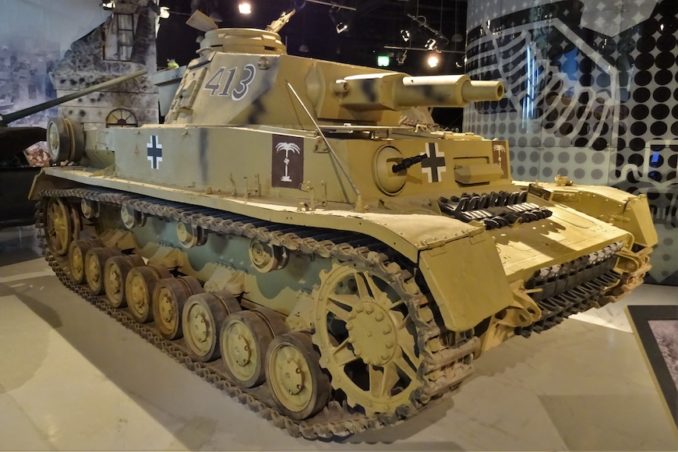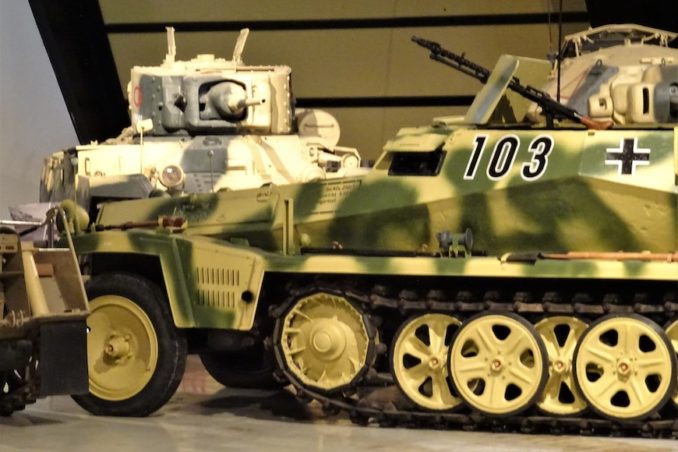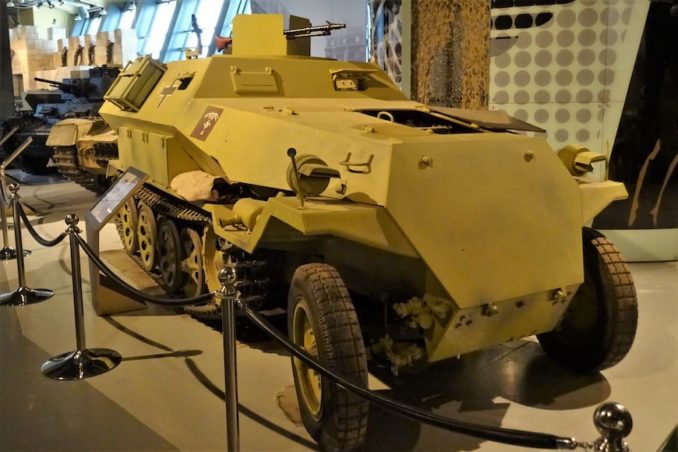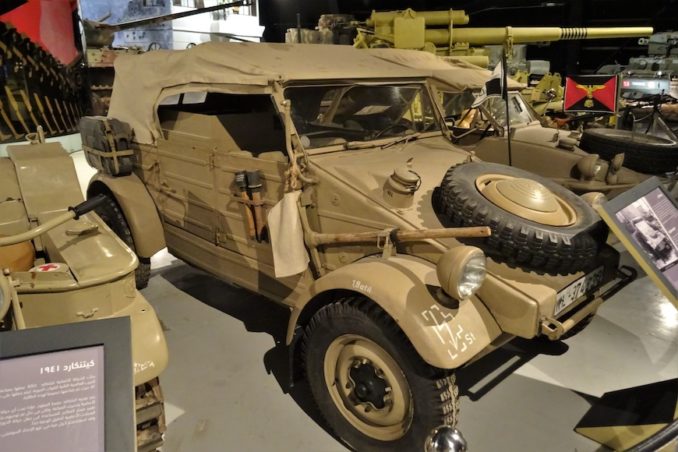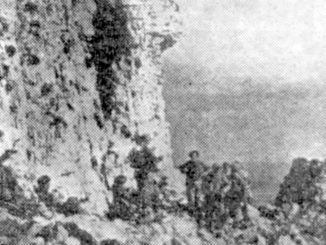The Royal Tank Museum
In Part 4, I described the vehicles that belonged to the British and Arab “Special Forces” of WW1 and WW2 that are displayed in The Royal Tank Museum in Amman, Jordan. The other vehicles in the museum that were of particular interest to me were those in their Deutsche Afrika Korps display of armour and ephemera.
During the turbulent post-war period in the Middle East, most new armour was supplied directly to the various warring factions by the British, Americans and Russians.
Initially however, many captured German WW2 tanks from around Europe were sold on to the emerging combatants, such as Stug III and Panzer IV from Romania, Czechoslovakia, France and Spain, whilst others were locally sourced such as ex-DAK Sturmpanzer III Bison that Egypt and Syria recovered from the desert.
Evidence of this can be found in the wrecks still in-situ, for example, on the Golan Heights where the remains of Syrian Panzers can still be found alongside Israeli Shermans and Bren Gun Carriers.
These may have been the source of some of the museum’s display of vehicles associated with the Deutsche Afrika Korps, whilst others may have been rebuilt from original wrecks brought in from the Western Desert.
A selection from the Museum’s DAK display. Panzer I equipped with two MG 13 machine guns, Panzer IV with 7.5 cm gun, SdKfz 250, SdKfz 251, Volkswagen Type 82 Kübelwagen and NSU SdKFz 2 Kettenkrad:
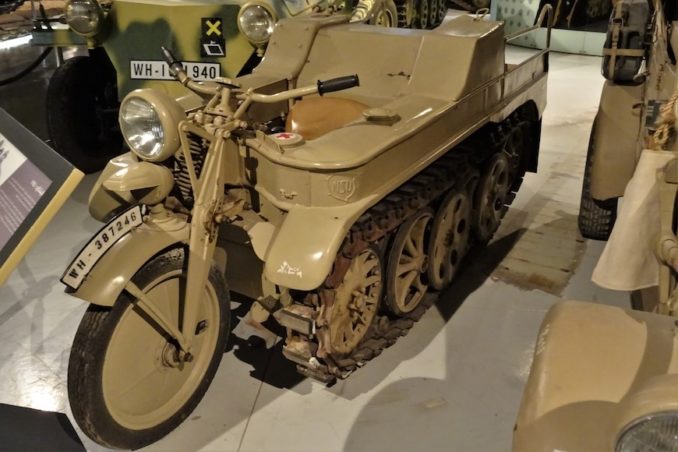
This StuG III was donated to the Museum by Syria and is a Desert Mystery. Restored as one of the few to get to Tunisia to support the DAK against the Anglo-American invasion, is it an original or a facsimile?
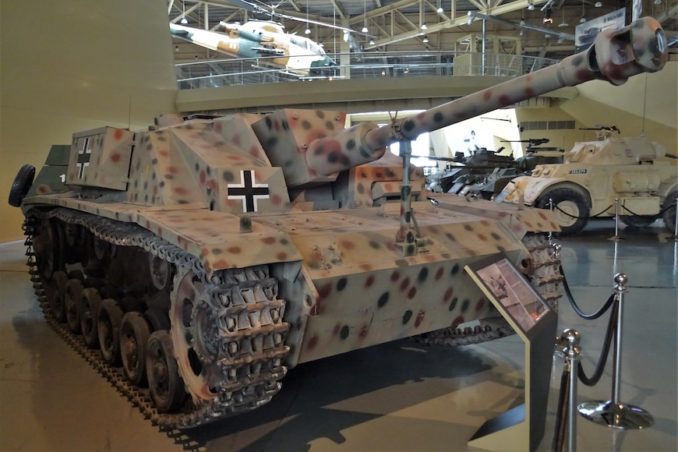
The long-barrelled gun is the giveaway as original WW2 photographs of StuG III in Tunisia show them to have been equipped with the short-barrelled, low-velocity 7.5 cm gun, similar to the Panzer IV above, so this was probably a Syrian purchase from Czechoslovakia where a StuG repair workshop had been captured at the end of WW2.
The museum is surrounded by a high fence with armed guards, not surprising given that some of the local “refugees” may have an interest in purloining some of the more modern armour for other uses.
Encouraged by my taxi driver on the drive back to the gate, I stepped out and took a walk towards the museum workshops to see what they were restoring. Just before the gate guard “politely requested” I get back in the taxi, I managed to take this picture of a rare Opel Maultier in Afrika Korps paint emerging from the workshop.

In the film “Lawrence of Arabia”, Lawrence was asked, “What is it, Major Lawrence, that attracts you, personally, to the desert?” His response was, “It’s clean. I like it because it’s clean.” This quote is probably apocryphal but is the desert actually clean? In Part 6, a walk in the desert at Wādī al-Ramm.
© text & images John Tull 2024


